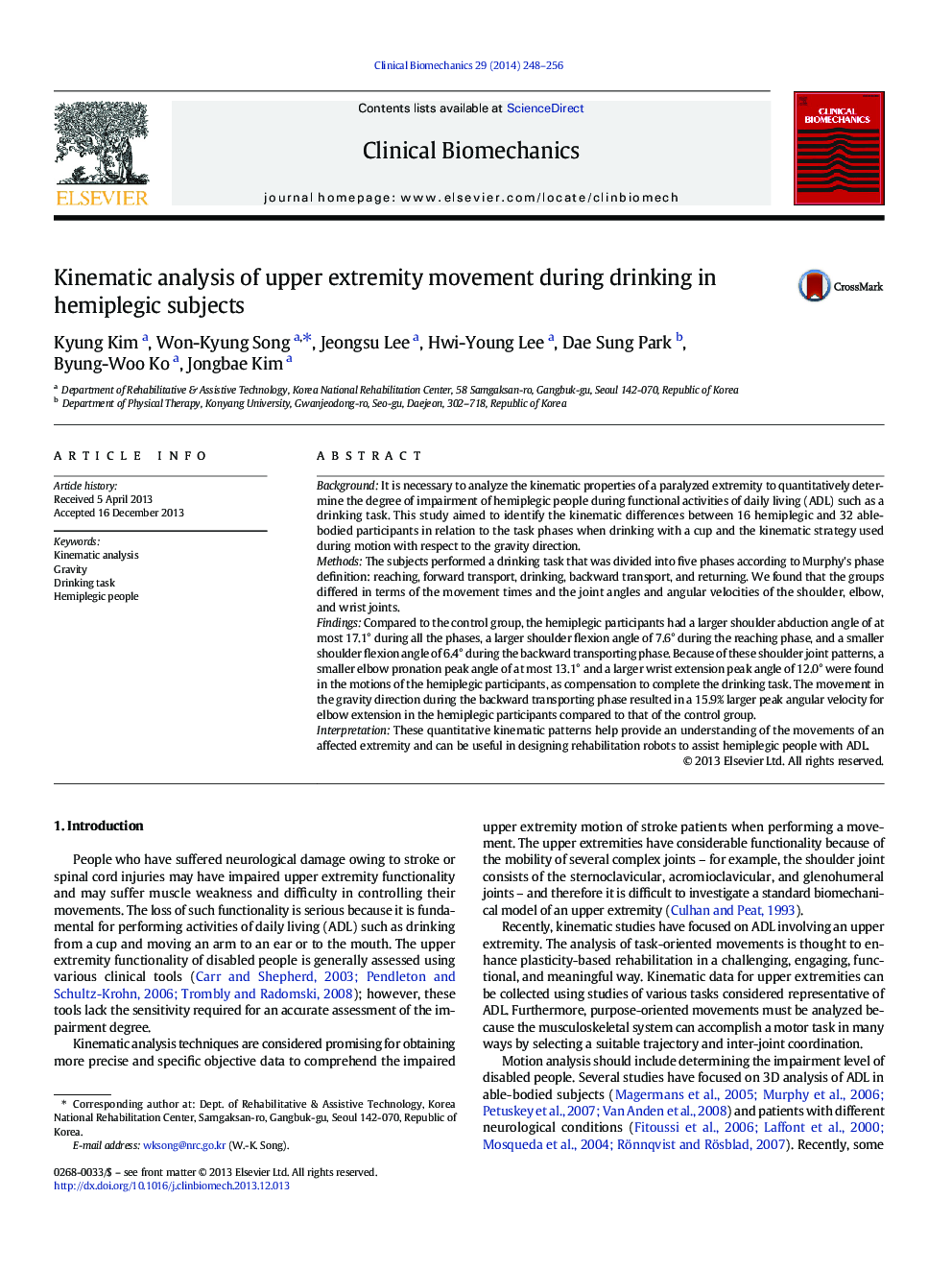| کد مقاله | کد نشریه | سال انتشار | مقاله انگلیسی | نسخه تمام متن |
|---|---|---|---|---|
| 4050276 | 1264919 | 2014 | 9 صفحه PDF | دانلود رایگان |

BackgroundIt is necessary to analyze the kinematic properties of a paralyzed extremity to quantitatively determine the degree of impairment of hemiplegic people during functional activities of daily living (ADL) such as a drinking task. This study aimed to identify the kinematic differences between 16 hemiplegic and 32 able-bodied participants in relation to the task phases when drinking with a cup and the kinematic strategy used during motion with respect to the gravity direction.MethodsThe subjects performed a drinking task that was divided into five phases according to Murphy's phase definition: reaching, forward transport, drinking, backward transport, and returning. We found that the groups differed in terms of the movement times and the joint angles and angular velocities of the shoulder, elbow, and wrist joints.FindingsCompared to the control group, the hemiplegic participants had a larger shoulder abduction angle of at most 17.1° during all the phases, a larger shoulder flexion angle of 7.6° during the reaching phase, and a smaller shoulder flexion angle of 6.4° during the backward transporting phase. Because of these shoulder joint patterns, a smaller elbow pronation peak angle of at most 13.1° and a larger wrist extension peak angle of 12.0° were found in the motions of the hemiplegic participants, as compensation to complete the drinking task. The movement in the gravity direction during the backward transporting phase resulted in a 15.9% larger peak angular velocity for elbow extension in the hemiplegic participants compared to that of the control group.InterpretationThese quantitative kinematic patterns help provide an understanding of the movements of an affected extremity and can be useful in designing rehabilitation robots to assist hemiplegic people with ADL.
Journal: Clinical Biomechanics - Volume 29, Issue 3, March 2014, Pages 248–256